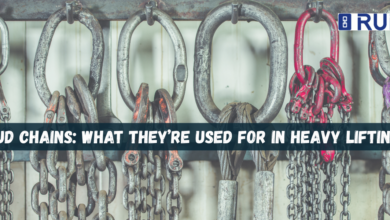Types of Pneumatic Lifting Devices and Their Applications: Your Ultimate Selection Guide

A pneumatic lifting device is a versatile and reliable tool designed to handle heavy loads with ease and precision across various industries. From manufacturing and automotive to logistics and warehousing, these air-powered systems offer efficient material handling solutions that enhance productivity and workplace safety.
In this article, we’ll explore the different types of pneumatic lifting devices and their specific applications, helping you choose the right equipment for your operational needs and ensuring you get the most out of your investment.
How Pneumatic Lifting Devices Work
Pneumatic suction cup systems lift objects by creating a vacuum using compressed air:
- Vacuum Generation: Compressed air flows into a vacuum generator, where it speeds up through a narrow nozzle. This creates a low-pressure zone that draws air out of the suction cups, forming a vacuum.
- Surface Contact: Flexible suction cups are pressed against a non-porous surface. The vacuum inside the cups creates a pressure difference, allowing atmospheric pressure to press the cups tightly against the object and hold it securely.
- Maintaining Grip: The vacuum keeps the cups attached, allowing the object to be lifted, moved, or manipulated. The grip depends on vacuum strength and cup size.
- Release Mechanism: Air is reintroduced into the cups to equalize pressure, breaking the vacuum and safely releasing the object.
This system allows precise, safe, and efficient handling of materials, reducing the risk of damage and improving operational control.
Types of Pneumatic Lifting Devices
- Pneumatic Manipulator Arms
These are robotic-style arms powered by compressed air that can move in multiple directions.
Key Features:
- Precise control over movements.
- It can be fitted with different end tools.
- Ideal for repetitive or delicate tasks.
- Pneumatic Lifting Bags (Air Lifting Bags)
Inflatable bags that lift heavy objects by inflating with compressed air.
Key Features:
- Made of strong, durable materials.
- Can lift very heavy loads.
- Provide controlled, precise elevation.
- Vacuum Lifters with Pneumatic Suction Cups
Use suction created by compressed air to lift smooth, non-porous materials.
Key Features:
- Suction cups create a strong vacuum seal.
- Reduce risk of damage to fragile materials.
- Allow easy handling of large, flat objects.
- Vacuum Generator Systems
Produce the vacuum needed for suction-based lifting devices.
Key Features:
- Adjustable vacuum level and flow rate for different tasks.
- Modular and can integrate with various lifting devices.
- Provides the “power source” for vacuum lifters.
- Pneumatic Hoists and Balancers
Devices that lift and balance loads vertically using compressed air.
Key Features:
- Hoists lift heavy loads smoothly over long distances.
- Balancers allow loads to “float,” making them easier to move.
- Improve ergonomics and reduce worker fatigue.
These devices use compressed air to lift and move objects safely. They come in different types for tasks like precise handling, lifting heavy loads, moving smooth materials, or lifting items vertically.
See also: 50 Must-Watch Stocks for Tech Investors
Key Considerations for Selecting a Pneumatic Lifting Device
- Load Capacity
The maximum weight a lifting device can safely handle. Exceeding this limit can cause accidents, injuries, or equipment failure.
- Selection tip: Always select a device with a 10–15% higher capacity than your heaviest expected load. This margin accounts for unexpected weight variations, dynamic forces during lifting, or uneven load distribution.
Example: If you need to lift 500 kg regularly, choose a device rated for at least 550–575 kg to maintain safety and longevity.
- Application Environment
Different environments can affect the performance, safety, and durability of pneumatic devices.
Considerations:
- Cleanrooms or hygiene-sensitive areas (pharmaceutical, food processing): Use stainless steel, food-grade materials, and smooth surfaces to prevent contamination.
- Hazardous or explosive environments (presence of flammable gases or dust): Pneumatic systems are ideal because they do not produce sparks, unlike electric devices.
- Outdoor or dusty/wet environments: Devices with corrosion resistance or sealed components are preferable.
Example: A lifting device used in a bakery must be corrosion-resistant and easy to clean, while one in a metal workshop must handle sparks safely.
- Ergonomics and Operator Comfort
Operator fatigue and strain are major causes of workplace injuries and reduced productivity. Ergonomically designed devices reduce these risks.
Features to look for:
- Adjustable handles or grips to fit different operators.
- Balanced load distribution to reduce effort.
- Intuitive controls for smooth and precise handling.
Example: A pneumatic balancer that allows a heavy tool to “float” reduces arm and back strain for the operator during repetitive tasks.
- Customization Options
Not all loads are uniform, and specialized shapes or materials require tailored solutions for safe handling.
Customization possibilities:
- Suction cups of different sizes or materials to handle smooth, rough, or porous surfaces
- End-effectors or grippers designed for unusual shapes or delicate materials
- Adjustable lifting height, reach, or articulation for specific tasks
Example: Handling fragile glass panels requires a vacuum suction cup designed to prevent scratches, while lifting wooden boards may need porous-surface suction adaptations.
- Safety Features
Safety mechanisms prevent accidents, protect the operator, and avoid damage to expensive equipment or products.
Essential features:
- Overload protection: Stops lifting if the weight exceeds capacity.
- Emergency stop: Instantly halts operation in important situations.
- Fail-safe mechanisms: Prevent uncontrolled dropping or movement if a component fails
Compliance: Ensure the device meets relevant safety standards to ensure reliable operation.
- Maintenance and Durability
Frequent breakdowns increase downtime, repair costs, and workflow interruptions. Durable, low-maintenance equipment improves productivity.
Advantages of pneumatic systems:
- Fewer moving parts than hydraulic or electric systems.
- Less prone to leaks or electrical failures.
- Easier maintenance and replacement of parts.
Tips:
- Choose devices with clear maintenance schedules and accessible replacement parts.
- Check material quality for resistance to wear, corrosion, and heavy use.
A pneumatic hoist in a warehouse should operate reliably for years with minimal lubrication or part replacement.
Advantages of Pneumatic Lifting Devices
- Ergonomic Efficiency: Reduce physical strain on workers by minimizing manual lifting and repetitive movements, improving comfort and productivity.
- Safety in Hazardous Environments: Spark-free operation makes them safe to use in areas with flammable gases or dust.
- Low Maintenance and Cost-Effective: Fewer moving parts mean less maintenance, lower costs, and longer service life.
- Precision and Control: Allow accurate lifting and positioning, ideal for delicate or exact handling tasks.
- Versatility: Can handle different load types and sizes, making them suitable for use in many industries.
Common Applications by Industry
- Manufacturing: Used on assembly lines to handle and position components accurately, reducing manual labor and injury risk.
- Construction and Rerailing: Pneumatic lifting bags are used to raise heavy machinery and materials on construction sites. They can also safely lift derailed train cars during rerailing operations.
- Glass and Metal Handling: Uses vacuum lifters with pneumatic suction cups to safely lift and move fragile materials. Commonly used in glass and metal fabrication.
- Electronics and Precision Industries: Provide controlled lifting and positioning for small, delicate components, ensuring safe assembly of electronic parts.
- Warehousing: Pneumatic lifting devices safely move heavy packages, reduce worker fatigue, and improve efficiency in logistics operations.




